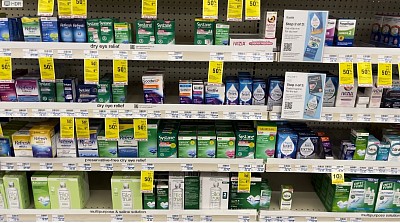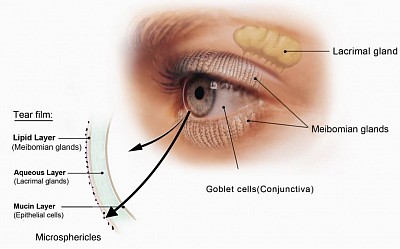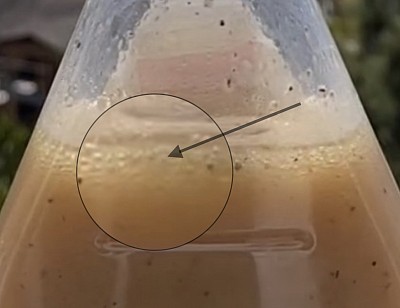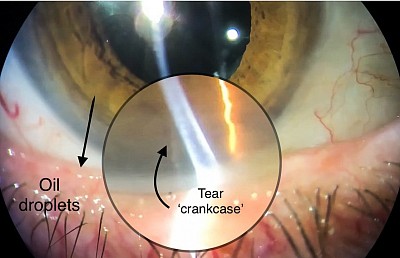New dry eye treatment drop (Patent applied for)
A new benchmark in dry eye care. Not a temporary reliever but a treatment.
Welcome to our web page. Often we are asked “Why do our new drops work so much better than anything I have tried.” All the other drops came from a government allowed list of ingredients. For decades two basic category of active ingredients were allowed. Examples are tear thickener commonly used in foods and cosmetics called CMC. The other was an oil substance like glycerol or mineral oil.
The only differences between drops are inactive ingredients helpers called (excipients). This is the only difference between drops. If you read the labels you will find many strange ingredients like watermelon extracts!
Our excipients are based on the science of lubrication. We are the first to add a non emulsified oil that perfectly coats the ocular surface and remains for hours. It also has a very tiny waxy particle that evenly dispenses the tear film and acts like nature’s own lubricating particles.
Why do eyes feel dry?
Next a little scientific background. The tear film is made up of three layers. It is like a sandwich with the inside of the lid and cornea having a sticky protective surface of mucus. The mucus layer allows the adherence of the aqueous layer. Here is an important point. The lid blinks 15 times a minute, 900 times a hour and more than 12,000 times a day. It creates friction which is lubricated with oil. If not properly lubricated ‘rub’ areas on the eye develop and it feels dry.
Improved oil coating
None of the existing drops allow oil to stay on the surface of the eye! This is due to a fundamental misunderstanding of biochemistry. The pharmacists insisted that oil and water needed to be permanently bound to each other so each drop contained the exact amount of oil. What they missed was that bound oil drains out quickly with the tears in minutes. This leads to the problem that all existing lubricating drops feel good but only temporarily. The lid squeegees the combined drop out of the eye and within minutes. Lubrizity ™️ is different. It stays longer and is more effective because the oil can separate.
The solution: A non-permanently emulsified drop
Oil can be mixed with water in a way that it is only temporarily combined. We do this just like mixing salad dressing. We shake Lubrisity™️ to form small droplets that ‘stick’ to the eye’s surface. It remains long after the water disappears. This lubricates the moving lid and eye. We all have had an experience in the kitchen or shop where oil does not easily wash off our skin.
Another new discovery: The mysterious natural particle in the tear film
Natures oiled ballbearings
Please note in the photo the small spherical particles that float in the tear film. They went unnoticed by eye doctors until we saw them and questioned what function they serve. We found they were made in the oil glands on the eyelid margins. When a person blinked or squeezed many more particles appeared. Of interest in many dry eye patients these particles were reduced. If you are curious read the next page to synthetic lipid particles.
Instructions for Lubrizity™️ use
Therefore Lubrisity™️ needs to be shaken 10 times to make droplets of oil before each use. (Just like salad dressing!). 1 drop is applied to each eye in the morning, 1 drop at lunch, 1 drop at dinner and 1 before bedtime. The drop should be discarded after 6 weeks of use. If you miss uses another drop, too much will not hurt you.
Caution: Do not use if you are allergic to carboxymethycellulose, castor oil or polymer wax.
How does it work?
Lubrizity™️ uniquely puts oil droplets and sphericles on the lid edge and in the ‘crankcase’ (lower lid tear lake). The lid edge works like a two way squeegee. The sphericles acts like ball bearing spacers to lift the lid edge to allow fluid to get under the lid seal. This allows tears made under the lid to pass to the corneal surface on the blink. It also permits tears to be lifted across the cornea when the eyelid opens. It does all of the above while lubricating the friction of the lid and it’s edge on the corneal epithelium. Without them it would be like running your windshield wipers when it is not raining!





